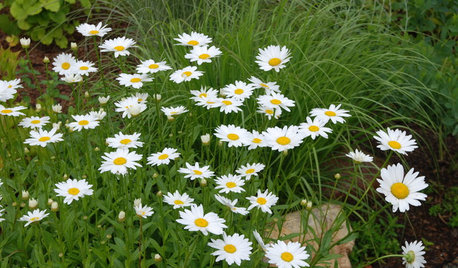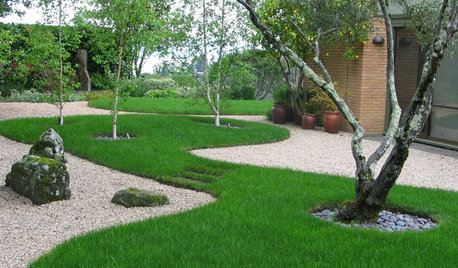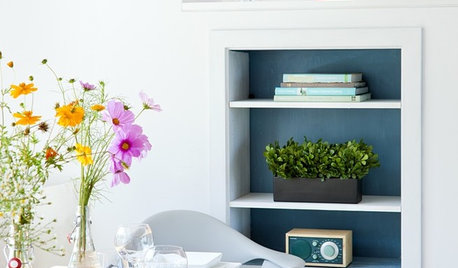black and blue cuttings
hummersteve
16 years ago
Related Stories

BLUEIs Midnight Blue the New Black?
As bold as black but much more versatile, midnight blue is becoming a star
Full Story
HOME OFFICESQuiet, Please! How to Cut Noise Pollution at Home
Leaf blowers, trucks or noisy neighbors driving you berserk? These sound-reduction strategies can help you hush things up
Full Story
FLOWERSBest Cutting-Garden Beauties for Late Summer
Pick blooms bursting with color or in classic white for bouquets to give away or keep all to yourself
Full Story
LANDSCAPE DESIGNIs Your Garden Cut Out for Matisse Inspiration?
Look to the artist’s paper collages for a creative and easy approach to garden design
Full Story
BLACKColor Guide: How to Work With Black
Take a walk on the dark side — your home has nothing to fear with this color when you know how to use it
Full Story
GARDENING GUIDESPlant Black Cherry Trees for the Birds and Bees
Plant Prunus serotina in the Central and Eastern U.S. for spring flowers, interesting bark and beautiful fall color
Full Story
BLUEMarine Blue Washes Ashore
Straight from the ocean waves, this deep, dramatic blue makes a perfect partner for landlocked interiors
Full Story
BASEMENTSBasement of the Week: Smart Cost Cutting, Beautiful Results
A stylish multipurpose basement for less than half the usual cost? See the budget-saving tricks that helped this underground space
Full Story
DECORATING GUIDESOn Trend: Cut It Out With Norwegian Seating
You may find these nipped-out chairs extra full of modern style and comfort, thanks to their savvy designs
Full Story
GARDENING GUIDES7 Ecofriendly Gardening Ideas That Also Cut Chore Time
Spend less time weeding, less money watering and more moments just sitting back and enjoying your healthy garden
Full StoryMore Discussions






rich_dufresne
wardda
Related Professionals
Holly Springs Landscape Architects & Landscape Designers · Middle River Landscape Architects & Landscape Designers · Milwaukee Landscape Architects & Landscape Designers · Otsego Landscape Architects & Landscape Designers · Panama City Landscape Architects & Landscape Designers · Southfield Landscape Architects & Landscape Designers · White Oak Landscape Architects & Landscape Designers · Broomfield Landscape Contractors · Concord Landscape Contractors · Holland Landscape Contractors · Pikesville Landscape Contractors · Selden Landscape Contractors · Smyrna Landscape Contractors · Laurel Siding & Exteriors · Round Rock Siding & Exteriorspeterls
hummersteveOriginal Author
hummersteveOriginal Author
wardda
hummersteveOriginal Author
wardda
hummersteveOriginal Author
wardda